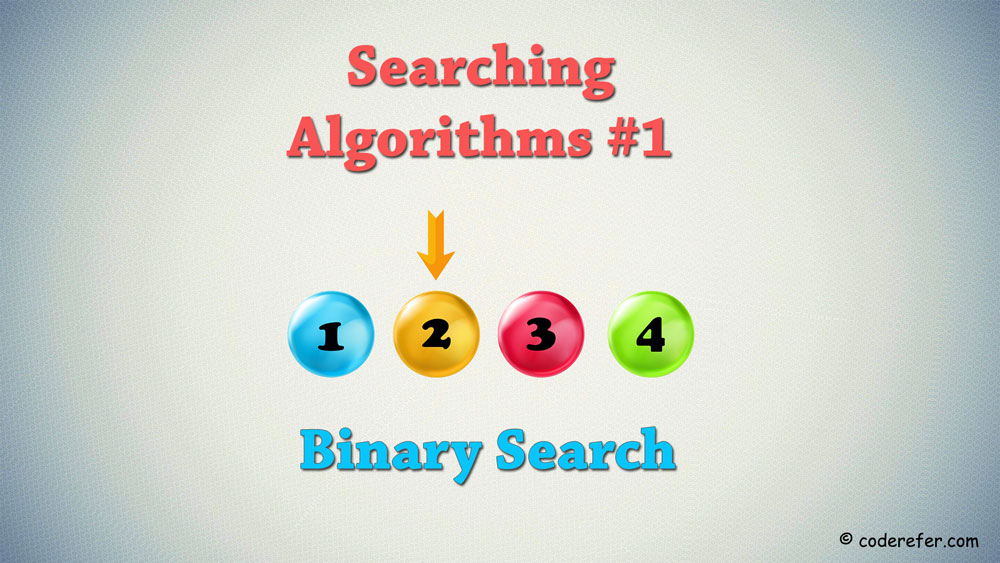In this article, let us discuss one more Algorithm – Binary Search which is the most frequently asked Algorithms during Interviews. Let us discuss about it in brief and how to implement its algorithm using Kotlin Programming Language.
According to Wikipedia, A Binary Search is a search algorithm that finds the position of a target value within a sorted array. The algorithm compares the target element with the middle element of the array. If the target element is greater than middle element, the algorithm will be reapplied to the right of the array. If the target element is less than middle element, then the algorithm is again applied to the left of the array. Note that this algorithm is to be applied only on the sorted array.
Related Links
- Merge Sort using Kotlin
- Quick Sort using Kotlin
- Bubble Sort using Kotlin
- Android Interview Questions
[adinserter block=”3″]
Advantages
Binary Search is significantly faster than that of Linear search. While Linear search takes O(n) time to search for an element in worst case, Binary search only takes O(log n) to search an element. For example, if there are more elements, it will significantly reduces the amount of time taken to find the element from the sorted array.
Algorithm
We will discuss here, the two ways of achieving Binary Search Implementation –
1. Binary Search through Iteration
Below gist shows us how to achieve the Algorithm through iteration. Here our goal is simple: Firstly to read the array and the element to be searched from the user input and print the position of element in the array. Here is the iterative implementation of the same. Code is commented wherever I find it necessary. Feel free to modify in gist / comment if anything more required.
This file contains hidden or bidirectional Unicode text that may be interpreted or compiled differently than what appears below. To review, open the file in an editor that reveals hidden Unicode characters.
Learn more about bidirectional Unicode characters
| package main.algorithms.searching | |
| fun main(args: Array<String>) { | |
| val input = readLine()!!.trim().split(" ").map { it -> it.toInt() }.toIntArray() // to read an array (from user input) | |
| val eleToSearch = readLine()!!.trim().toInt() // to read the element to be searched (from user input) | |
| val pos = binarySearchIterative(input, eleToSearch) | |
| if(pos >= 0 ) { | |
| println(pos) // to print position at last | |
| } else { | |
| println("Position not found") | |
| } | |
| } | |
| fun binarySearchIterative(input: IntArray, eleToSearch: Int) : Int{ | |
| var low = 0 | |
| var high = input.size-1 | |
| var mid:Int | |
| while(low <= high) { | |
| mid = low + ((high – low) / 2) | |
| when { | |
| eleToSearch >input[mid] -> low = mid+1 // element is greater than middle element of array, so it will be in right half of array | |
| eleToSearch == input[mid] -> return mid // found the element | |
| eleToSearch < input[mid] -> high = mid-1 //element is less than middle element of array, so it will be in left half of the array. | |
| } | |
| } | |
| return -1 | |
| } |
[adinserter block=”3″]
2. Binary Search through Recursion
Now we’ll see how to achieve the same through Recursion. Below gist shows the same:
This file contains hidden or bidirectional Unicode text that may be interpreted or compiled differently than what appears below. To review, open the file in an editor that reveals hidden Unicode characters.
Learn more about bidirectional Unicode characters
| package main.algorithms.searching | |
| fun main(args: Array<String>) { | |
| val input = readLine()!!.trim().split(" ").map { it -> it.toInt() }.toIntArray() // to read an array (from user input) | |
| val eleToSearch = readLine()!!.trim().toInt() // to read the element to be searched (from user input) | |
| val pos = binarySearchRecursive(input, eleToSearch, 0, input.size -1) | |
| if(pos >= 0 ) { | |
| println(pos) // to print position at last | |
| } else { | |
| println("Position not found") | |
| } | |
| } | |
| fun binarySearchRecursive(input: IntArray, eleToSearch: Int, low:Int, high:Int): Int { | |
| while(low <=high) { | |
| val mid = (low + high) /2 | |
| when { | |
| eleToSearch > input[mid] -> return binarySearchRecursive(input, eleToSearch, mid+1, high) // element is greater than middle element of array, so it will be in right half. Recursion will call the right half again | |
| eleToSearch < input[mid] -> return binarySearchRecursive(input, eleToSearch, low, mid-1) //element is less than middle element of array, so it will be in left half of the array. Recursion will call the left half again. | |
| eleToSearch == input[mid] -> return mid // element found. | |
| } | |
| } | |
| return -1 | |
| } |
Feel free to suggest any modifications / feedback on the above implementation.


